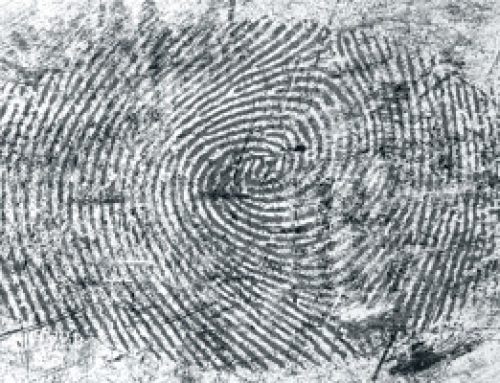Calls to Police, Ambulance and Fire
The following table reflects the number of unique events responded to by Emergency Medical Services (EMS), in Niagara and three comparison municipalities. The median is the middle value of figures provided by the 12 municipalities across Canada are a part of the Municipal Benchmarking Network Canada.
| Number of Unique EMS Responses per 1,000 population | |||
| Municipality | Unique Responses, 2013 | Unique Responses, 2014 | Unique Responses, 2015 |
| Niagara | 123 | 128 | 138 |
| Durham | 87 | 87 | 98 |
| Halton | 74 | 78 | 78 |
| Hamilton | 102 | 105 | 110 |
| Median | 110 | 116 | 116 |
Source: Municipal Benchmarking Network Canada. 2015 Performance Measurement Report. Retrieved from: http://www.niagaraknowledgeexchange.com/resources-publications/2015-performance-measurement-report/
The following table summarizes responses by the St. Catharines Fire and Emergency Services Department in 2014-2016.
| Code: | 2014 | 2015 | 2016 |
| Structure Fire | 245 | 265 | 268 |
| Remote Alarms | 742 | 781 | 866 |
| Preliminary Response | 30 | 24 | 56 |
| Vehicle Fire | 45 | 61 | 40 |
| Grass/Tree/Brush | 131 | 136 | 111 |
| Burning Complaints | 257 | 237 | 319 |
| MVC’s (motor vehicle collisions) | 537 | 569 | 608 |
| General Rescue | 12 | 11 | 11 |
| Medical Calls | 4,246 | 4,588 | 4,575 |
| Carbon Monoxide | 277 | 246 | 285 |
| Hazmat Calls | 50 | 41 | 46 |
| Emergency Assist | 310 | 296 | 316 |
| Non-Emergency/Assist | 142 | 150 | 205 |
| Boat Calls | 9 | 5 | 4 |
| Unknown 911 | 399 | 376 | 378 |
| Total | 7,432 | 7,786 | 8,088 |
Source: City of St. Catharines [data file].
Police Officers per 100,000 Population in Niagara
According to Statistics Canada, police strength is measured by the number of staffed officers. The rate of police strength is a ratio of police to the total population, typically reported by the number of police per 100,000 population. Statistics Canada takes a snapshot of police strength every year on May 15th. For more details see http://www.statcan.gc.ca/pub/85-002-x/2016001/article/14323-eng.htm
The following chart shows the number of police officers per 100,000 population in the Niagara Regional Police Service, from 2000 – 2016.
| Police officers per 100,000 population, Niagara Regional Police Service | |||||||||
| Statistics | 2008 | 2009 | 2010 | 2011 | 2012 | 2013 | 2014 | 2015 | 2016 |
| Total number of police officers | 693 | 675 | 732 | 728 | 704 | 706 | 708 | 709 | 706 |
| Police officers per 100,000 population | 157 | 153.2 | 166.1 | 164.8 | 158.5 | 158.5 | 158.9 | 158.5 | 157.2 |
Source: Statistics Canada. CANSIM Table 254-0002 [Data file].
Retrieved from http://www5.statcan.gc.ca/cansim/pick-choisir?lang=eng&p2=33&id=2540002
In 2016 the new Niagara Regional Police Service headquarters opened in Niagara Falls, consolidating five existing police facilities and district operations for Niagara Falls and Niagara-on-the-Lake.
Source: Niagara Regional Police Service
Retrieved from: http://www.niagarapolice.ca/en/newsevents/nrps-on-the-move-.asp
EMS Response Times
The following tables summarize Niagara EMS response times. Response times are defined by the Canadian Triage Acuity Score (CTAS), a commonly-used system that prioritizes patient care based on severity, signs, and symptoms.
SCA (Sudden Cardiac Arrest) refers to the time from dispatch receiving the call to the arrival of any trained/qualified person to provide defibrillation. CTAS 1 through 5 refers to the time when dispatch receives the call to the arrival of a Niagara EMS paramedic.
| Niagara EMS Response Time Standard Results – 2013, 2014, 2015 | |||||
| Plan in Minutes | Plan in Percentage | Performance in Percentage, 2013 | Performance in Percentage, 2014 | Performance in Percentage, 2015 | |
| SCA | 6 | 55% | 59.1% | 58.8% | 59.0% |
| CTAS 1 | 8 | 80% | 77.7% | 72.0% | 76.1% |
| CTAS 2 | 11 | 90% | 86.0% | 85.1% | 83.9% |
| CTAS 3 | 15 | 90% | 93.0% | 91.3% | 89.9% |
| CTAS 4 | 20 | 90% | 97.0% | 96.6% | 94.2% |
| CTAS 5 | 30 | 90% | 99.8% | 99.7% | 99.4% |
Source: Response Time Standards for Niagara Emergency Medical Services. Niagara Region Public Health.
Retrieved from: https://www.niagararegion.ca/government/departments/health/ems-response-times.aspx
Niagara EMS (Emergency Medical Service) runs the Wainfleet Community Response Unit and Paramedic Program which responds to all emergency medical 911 calls as a first response unit while an ambulance is on its way; and provides Community Paramedic Program health resources in the form of home visits and general wellness assessments for residents in the Township of Wainfleet.
Niagara EMS is transitioning toward a Mobile Integrated Healthcare (MIH) model of providing healthcare in the out-of-hospital environment using patient-centered, evidence-based, coordinated, mobile resources. This includes improved coordination with other health care sectors, and a clinical response model that measures impact based on outcomes, rather than the conventional response time model that measures only process.
| Niagara EMS – Frequent Patient Calls as Percentage of All Calls 2013 – 2017* | |||
| Year | Frequent Patients Calls | All Calls | % Frequent Patients |
| 2013 | 2693 | 37599 | 7.16% |
| 2014 | 4283 | 47202 | 9.07% |
| 2015 | 5627 | 51751 | 10.87% |
| 2016 | 5720 | 54486 | 10.50% |
| 2017*
*Jan.- Sept. |
3515 | 41878 | 8.39% |
In 2016, high frequency users of Niagara EMS made up 10.5% of all ambulance calls. From January to September of 2017, high users made up 8.39% of all EMS calls, and this number is expected to remain the same through December. The reduction in 2017 compared to previous years is a reflection of active early identification of high users, done in partnership with Niagara Health, as well as referrals to Health Links in Niagara and other appropriate community services.
A model is being developed to support individuals in Niagara who had frequently been calling 911 to be less reliant on the ambulance system for their primary health care resources. EMS has developed a Regional Community Paramedic Program. Over the past year this program enabled reallocation of approximately 320 hours of ambulance availability back into the pre-hospital system, due to a reduction in 911 calls by high frequency users.
Data for 4 patients enrolled in the program for 1 full year shows a decrease in hospital admission days of 65.5%, which translates to a hospital savings of $21,233. In addition, the data shows a decrease in Emergency Department visits of 80%, which translates to a savings of $13,676 in reduced Emergency Department costs. Together this totals savings to the hospital system of $34,900 over 1 year. Without the intervention those dollars would have been spent had these patients continued to access Emergency Department and Hospital resources. Based on this data, sustained funding is being sought for the Regional Community Paramedic Program to be able to take on more patients.
Source: Niagara Region Emergency Medical Service
Retrieved From: https://www.niagararegion.ca/council/Council%20Documents/2017/phssc-agenda-sep-26-2017.pdf










